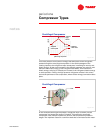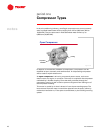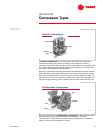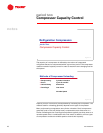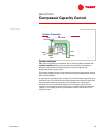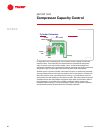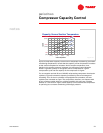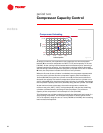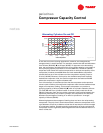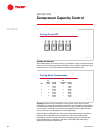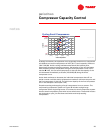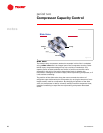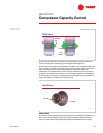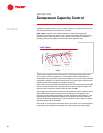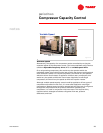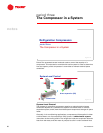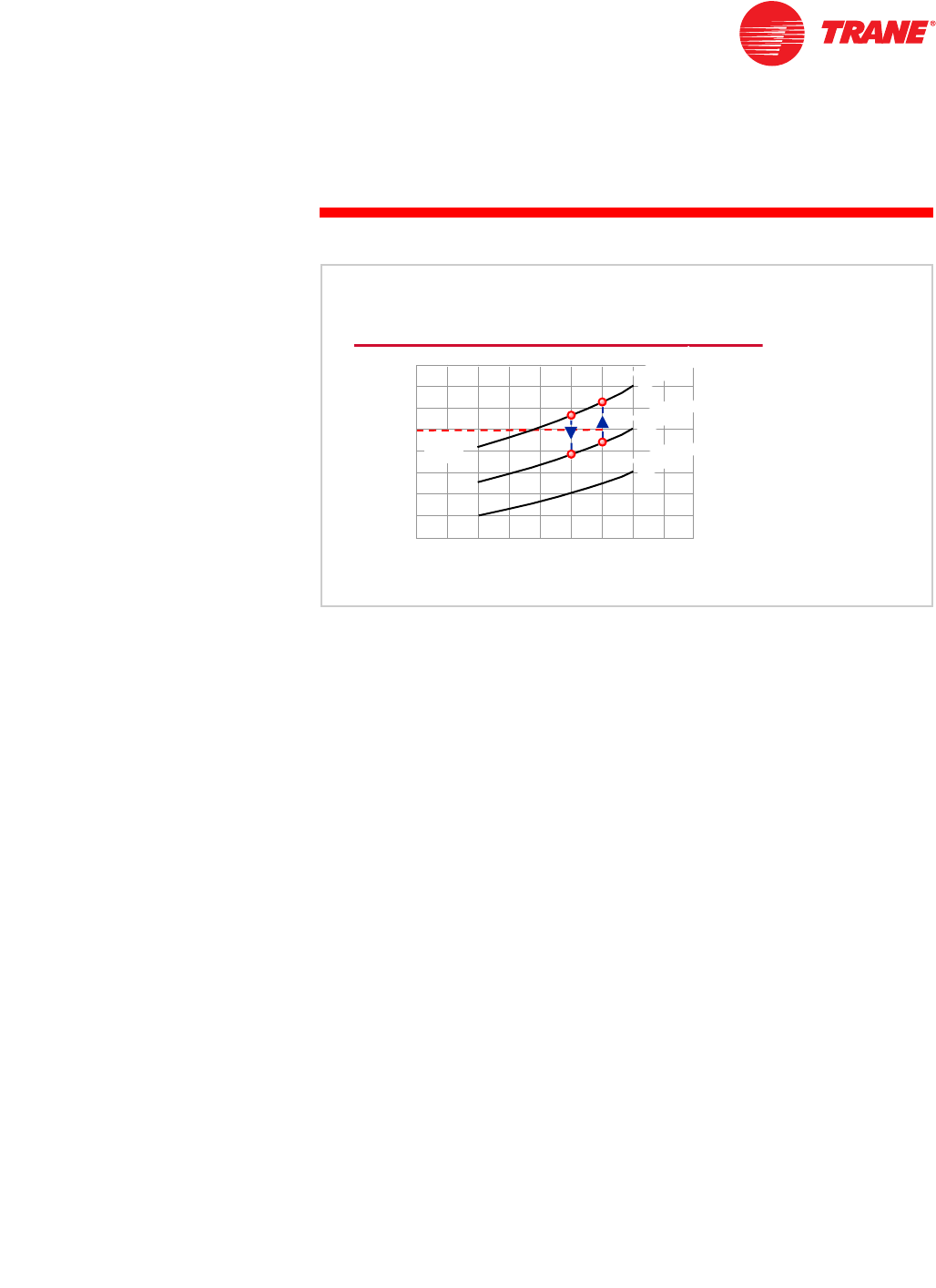
TRG-TRC004-EN 23
period two
Compressor Capacity Control
notes
In the case of comfort-cooling applications, however, the load generally
changes slowly in small intervals. For example, assume that the load decreases
from 28 tons [98.5 kW] (B) to 25 tons [88 kW]. In response to the decreasing
load, the compressor unloads to C on the four-cylinder capacity curve where it
has a pumping capacity equivalent to 19 tons [66.8 kW]. The 25-ton [88-kW]
evaporator load causes the suction temperature to rise and the capacity of the
compressor increases toward D. When the load reaches D the compressor
reloads the first set of two cylinders and the compressor capacity jumps to
31 tons [109 kW]. Because, at this point, the available compressor capacity
exceeds the evaporator load, the suction temperature decreases toward B
where the compressor is again unloaded to C.
From this example, it becomes obvious that the compressor and evaporator
cannot reach a balance point while the evaporator load remains between these
stages of compressor loading. This example compressor can produce a
pumping capacity of 28 tons [98.5 kW] (B) with six cylinders loaded or 22 tons
[77.4 kW] (D) with four cylinders loaded. It cannot exactly match the 25-ton
[88-kW] evaporator load. As long as the evaporator load remains between the
capacities produced by four and six cylinders, the compressor will alternate
between the two stages of loading in an effort to produce an “average”
capacity of 25 tons [88 kW].
Alternating between these stages of loading does not harm the reciprocating
compressor. The only time it should be avoided is when the compressor must
cycle between off and on to balance a load that is less than the minimum stage
of compressor loading. Excessive starting and stopping of large reciprocating
compressor motors is generally discouraged due to the mechanical wear on a
motor of that size.
$OWHUQDWLQJ&\OLQGHUV2QDQG2II
VXFWLRQWHPSHUDWXUH
VXFWLRQWHPSHUDWXUH
FDSDFLW\
FDSDFLW\
)
)
>&@
>&@
)
)
>&@
>&@
)
)
>&@
>&@
)
)
>&@
>&@
WRQV
WRQV
>N:@
>N:@
WRQV
WRQV
>N:@
>N:@
WRQV
WRQV
>N:@
>N:@
WRQV
WRQV
>N:@
>N:@
F
\
O
L
Q
G
H
U
V
F
\
O
L
Q
G
H
U
V
$
%
'
&
F
\
O
L
Q
G
H
U
V
F
\
O
L
Q
G
H
U
V
F
\
O
L
Q
G
H
U
V
F
\
O
L
Q
G
H
U
V
Figure 33



